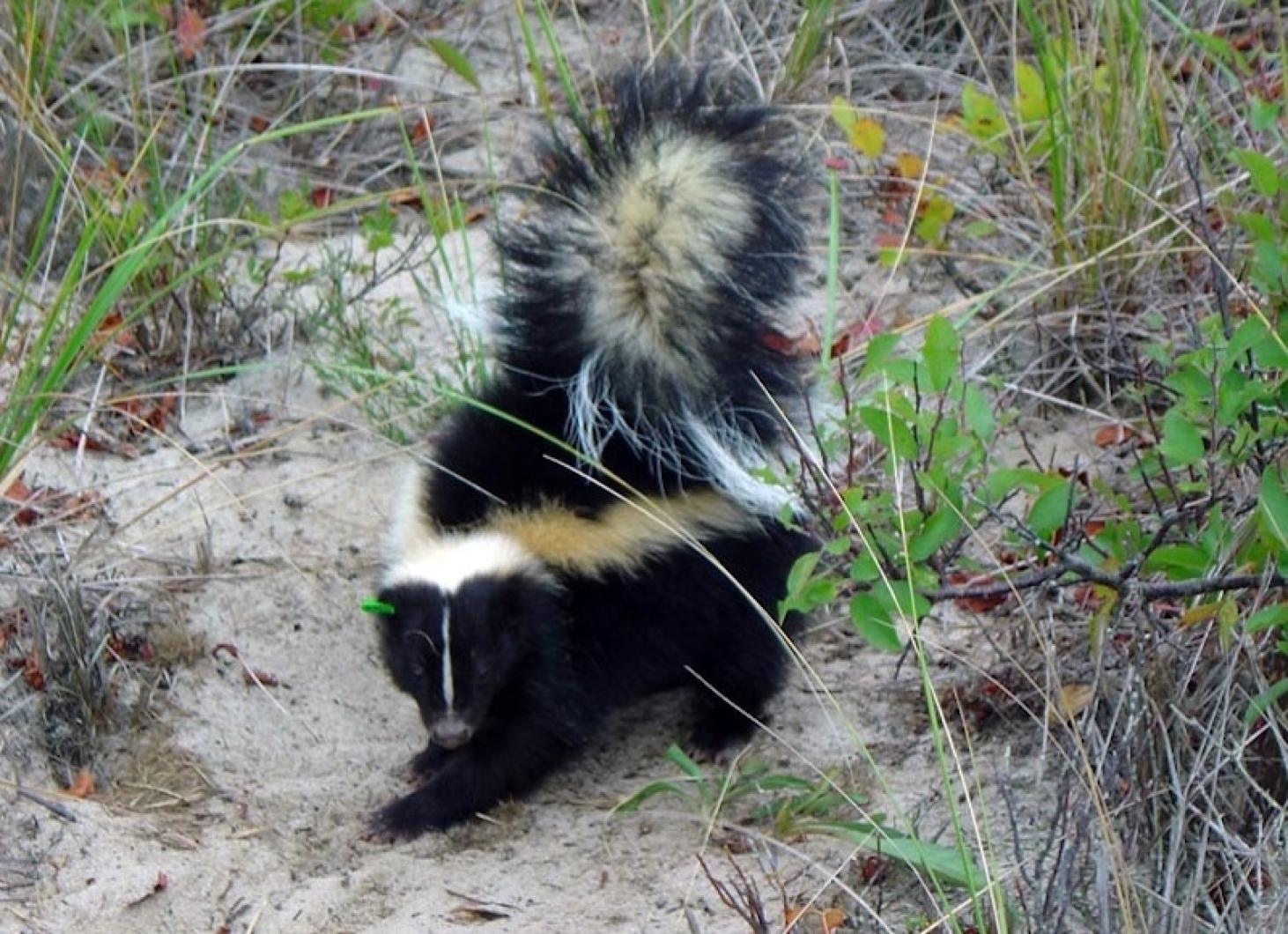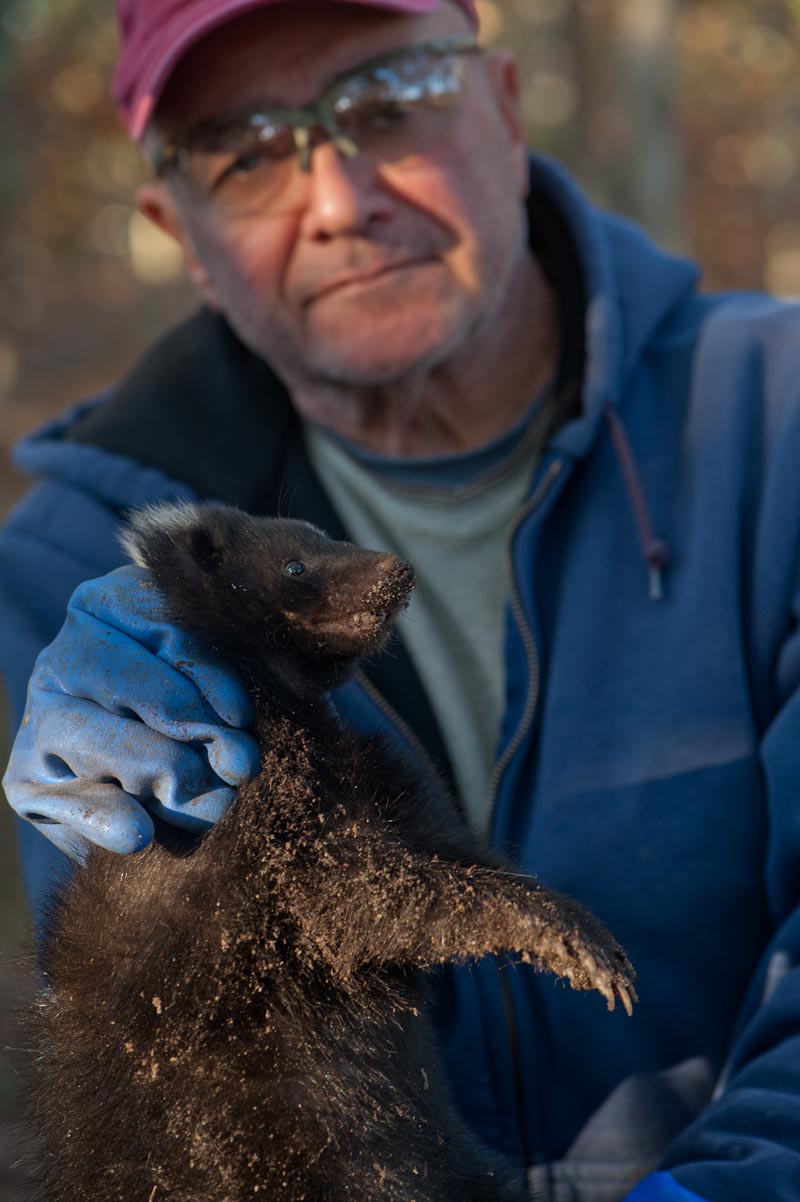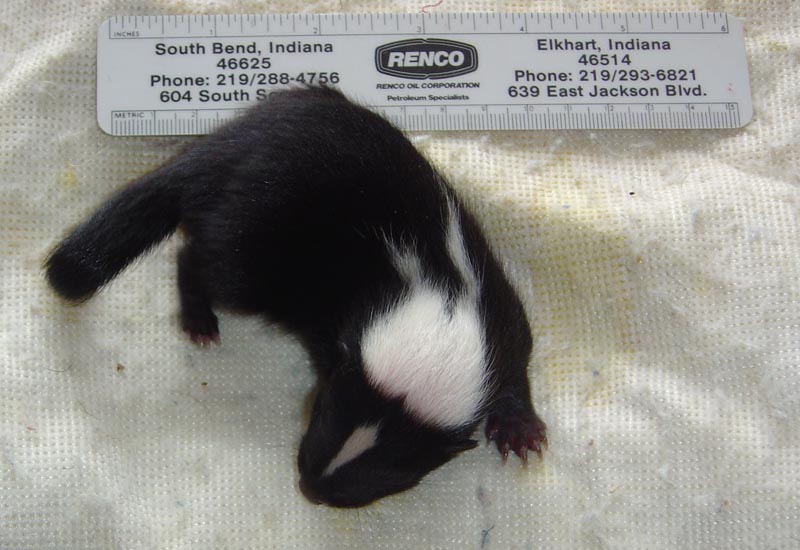The Vineyard is getting skunked! They are in high abundance this fall, ruling the night and leaving telltale tracks to be discovered during the day.
“They’ve come out in very unusually large numbers this year,” said Walter Wlodyka of Chilmark, who is particularly busy this fall, trapping skunks for clients all over the Island.
“It is not because of any unnatural reason. It is not because of people. It is due to weather, the abundance of food,” he said.
Last year’s mild winter played a key role. “The litter size increased from six, to 10 to 12,” Mr. Wlodyka said.
However, Mr. Wlodyka said the population isn’t as bad as he remembers years ago, when skunks wandered brazenly down the Main streets of the Island.
In the seasons of skunk, this is their season.
“They are most noticeable this time of year,” Mr. Wlodyka said. “They are out getting ready for winter. They are feeding, fattening up. The grubs are still around. There is plenty of food. Of course, it could be a barometer for how hard winter will be ahead,” he added.
Mr. Wlodyka said he is picking up two to three skunks a day. “And they are real fat,” he said.
One of the myths about skunks is that they hibernate, Mr. Wlodyka said.
“Skunks are like squirrels. They will stay in their nest for 10 to 12 days at a time. When you have a mild winter, the females can stay in top condition and feed heavily all winter long. With a lack of snow and ice, there is not much holding them back. They are in prime condition coming into spring.”
Gus Ben David, who runs the World of Reptiles and Birds Park in Edgartown, seconded Mr. Wlodyka’s observations.
“He is right on the mark,” said Mr. Ben David. “The conditions, as it relates to habitat, are absolutely ideal for skunks. Not just skunks but also white-tailed deer. We regulate the deer population. The same applies to skunks.”
Although local lore has skunks arriving on the Island in recent decades, skunks were actually enjoying the Vineyard as far back as colonial times, he said. But as the early Islanders altered the landscape, they made it less skunk-friendly.
“They denuded the landscape,” said Mr. Ben David, making room for sheep herding and extensive farming. “Now that the Vineyard is turning back to the woodlands, it is an ideal habitat.”
Mr. Ben David said there is another significant reason why the skunk population on the Vineyard seems to be doing so particularly well: lack of disease.
Luanne Johnson, a Tisbury scientist, has been studying skunks since 2004. She is writing her doctoral thesis on coastal skunk ecology, though her expertise covers skunks and other wildlife throughout the landscape. She will complete her dissertation this winter for Antioch University New England. Her theory is that the skunks have been without distemper.
“Distemper will thin out the population,” Ms. Johnson said.
In her studies, Ms. Johnson documented a difficult winter in 2004 to 2005, when not only was the weather tough, but the population of skunks was hit hard by the virus.
“I can tell you that almost 30 to 50 per cent of the animals that I captured and put radio callers on died by June,” she said.
Ms. Johnson noted that a red-tailed hawk took a skunk at Katama airfield a couple of weeks ago. She said that when the hawk was flushed from the carcass by a nearby passing airplane, another skunk was observed moving in to feed on the carcass.
“It is a myth that skunks don’t have a predator,” she said. The great horned owl will also take a skunk, though it prefers rabbit, Ms. Johnson said. But the main predator is most likely us.
“In all the radio telemetry studies anyone has done, they lose almost half to humans. Another 20 per cent are lost to the disease. A very few in those studies have ever been killed by predators,” she said.
In her study, she obtained Vineyard statistics from MassWildlife about the capture of the animal. She said that Vineyard trappers, people like Mr. Wlodyka, will remove from 400 to 750 skunks a year.
One could also make the point that a formidable predator is the automobile.
While there have been plenty of studies of skunks, Ms. Johnson’s dissertation is unique.
“Nobody has ever studied [skunks and] beach habitat,” she said. “We don’t know what they are doing in the beach habitat.” Thus Ms. Johnson’s study is of great value to naturalists. Skunks are predators to many animals on the Island, especially nesting coastal birds.
Echoing Mr. Ben David’s comments, Ms. Johnson agreed that skunks populated the Vineyard in colonial times. “They would put arsenic bait out,” she said. “That is how they got rid of all the carnivores. You can’t do that any more.”








Comments
Comment policy »